¶ Overview
The Qwix Web Portal is used to Monitor and Administer the Various Qwix Modules, Features and Processes. The Portal accesses the Qwix Database via the Qwix API Layer
¶ Logging In
Through the built-in Role-based security, Users log in to the portal via the Login page.
¶ Login Process
- Enter your username as supplied by your administrator
- Enter your password as supplied by your administrator
- Click on the Login button
- A small notification on the top right will provide any feedback on login
- Notification on password expiry
- Notification on Licencing restrictions/session expiry
- Notification on invalid credentials
¶ Password Change
When logging in and your password has been marked as expired due to password policy, you will be directed to the change password page:
- Enter your current password
- Enter your new password
- Confirm your new password
- Click on the Reset button
Notes:
- Password complexity rules need to be adhered to
- The new and confirmed password must match
- A visual indicator will reflect new password strength
- A notification in the top-right will inform you of any errors
¶ Administration
Roles and Users can be managed through the Security Views by your Administrator
¶ Main Page Layout
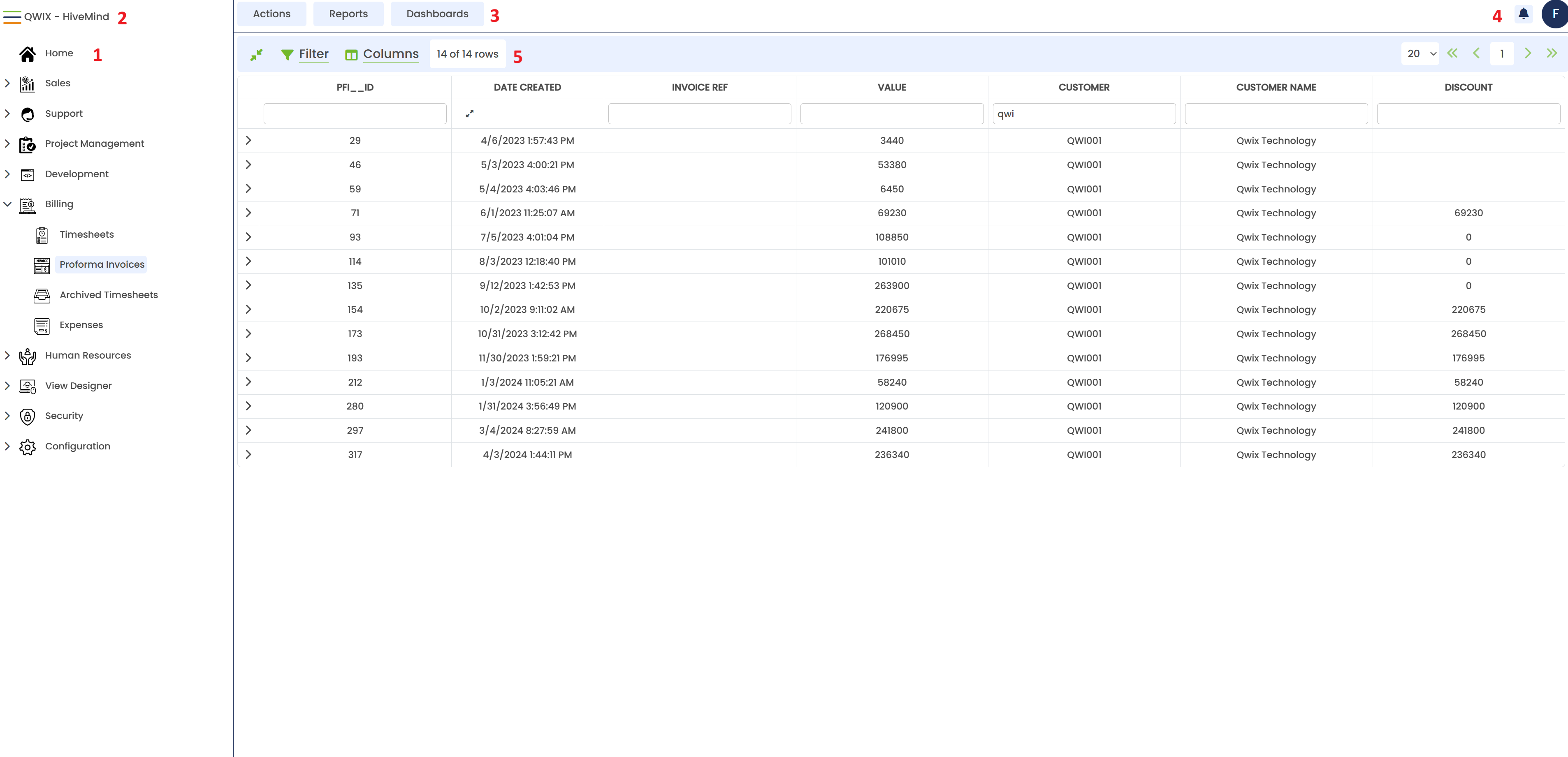
The Qwix Portal is broken up into five sections/frames. Below is the description for each of these sections
¶ 1. Navigation Bar
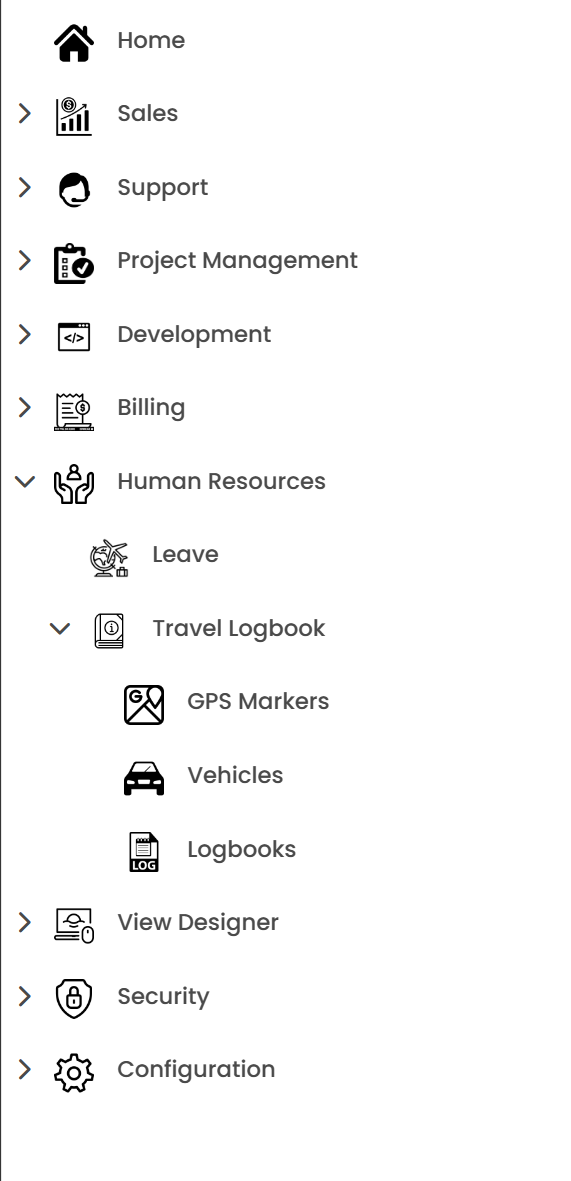
The Navigation Bar lists all the Views that can be accessed by the logged-in user. The navigation bar is in a menu-like structure. Some navigation items may have navigation items within them.
Clicking on a root parent navigation item will expand it to show its children. Clicking on another parent item will collapse any other expanded parent item.
Clicking on an appropriate navigation item that is configured as a View, will load the configured view into the View frame.
¶ 2. Site Name
Just to the right of the Navigation bar, you will find the site name. This is configured for each system. If you are connecting to multiple systems this is a clear indication to show which system you are connected to.
To the left of the site name, you will find three coloured stripes (hamburger). Clicking on the hamburger will collapses the Navigation bar to only show icons. Hovering over an icon will display the name of the menu in a tooltip. The Navigation menu's default state is configurable in the Settings menu. The hamburger will then change into an X.
Clicking on the X will show the navigation bar again.
¶ 3. RAD bar

The RAD bar is an acronym for Reports, Actions, Dashboards.
Each of these buttons hides a menu for the respective items they represent. Clicking on the Button will present the menu.
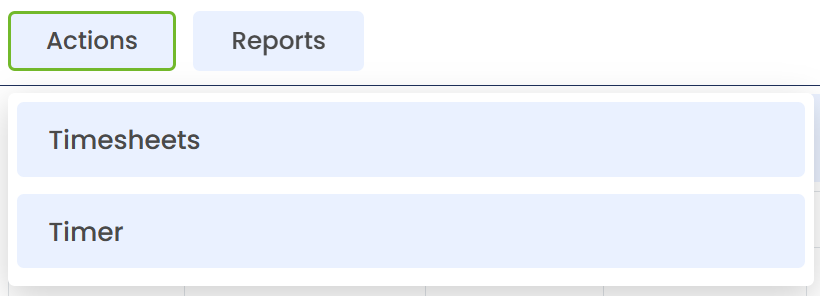
The menu items are grouped, and clicking on the group will show its menu items:
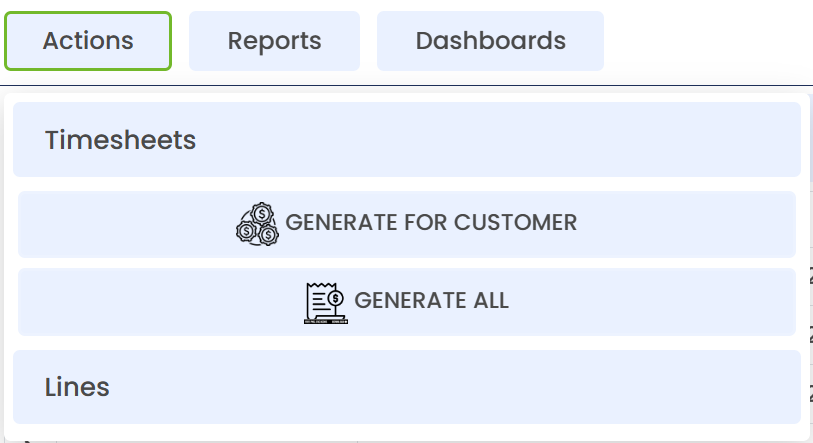
To learn more about the RAD components, please see
¶ 4. Notifications & Profile Menu
On the Top Right of the Main page, you will find the Notification Bell and the Profile menu:
¶ Notification Bell
The Notification bell will show a red dot over the bell if you have any unread notifications. Clicking on the bell will display a window with a list of notifications.
Notifications are implemented as a communication method for some implementations as requested. The notifications are specific to that implementation.
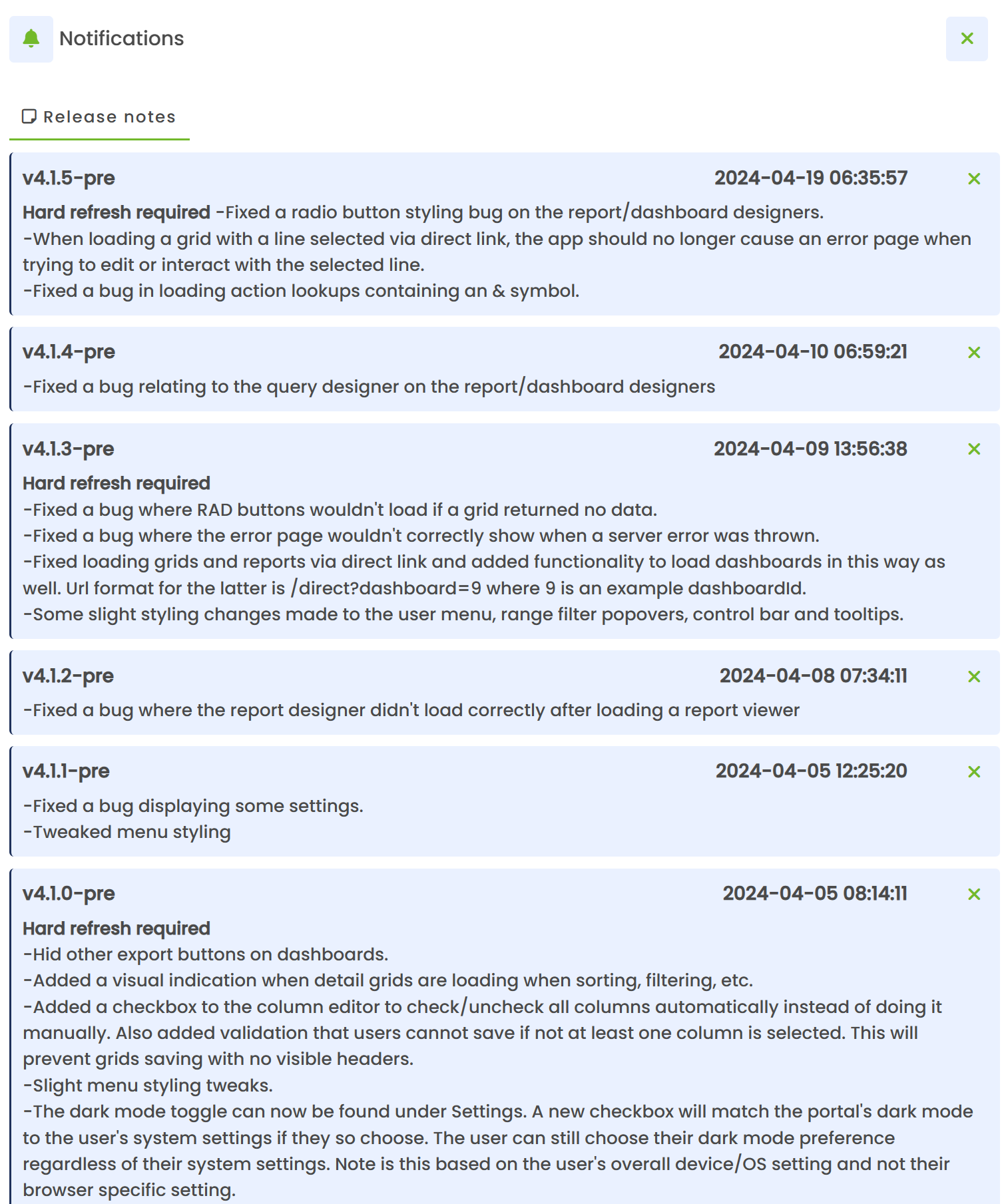
The notifications will appear in chronological order from most recent. Each notification has a title, notification date/time and a body.
Clicking on the body of any notification message will mark it as read. If you have no more unread notifications, the red dot will disappear from the bell icon.
Clicking the X (close) icon for any of the notifications will remove the notification completely.
¶ Profile Menu
The profile menu is identified by a round circle with a single character in it. The character will be the first character as configured for the logged in user's name.
Clicking on the Icon will show the profile menu:
¶ 1. Settings
Clicking on the Settings Menu Item will show the settings dialog
¶ 2. Report Designer*
Clicking on this menu item will load the report designer in a new window/tab.
See Report Designer
¶ 3. Dashboard Designer*
Clicking on this menu item will load the dashboard designer in a new window
See Dashboard Designer
¶ 4. Import File
Clicking on this menu item will load the File import module
¶ 4. Logout
Clicking on the logout icon will log the user out, and go back to the login page.
* Administrator access is required for these items
¶ 5. Views
In this frame, the currently active view will be displayed. To learn more about views please see Views